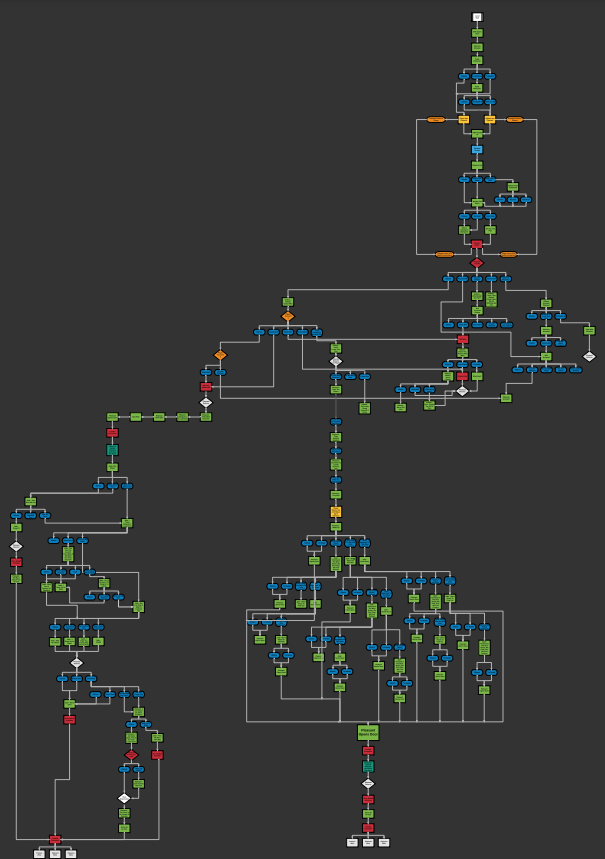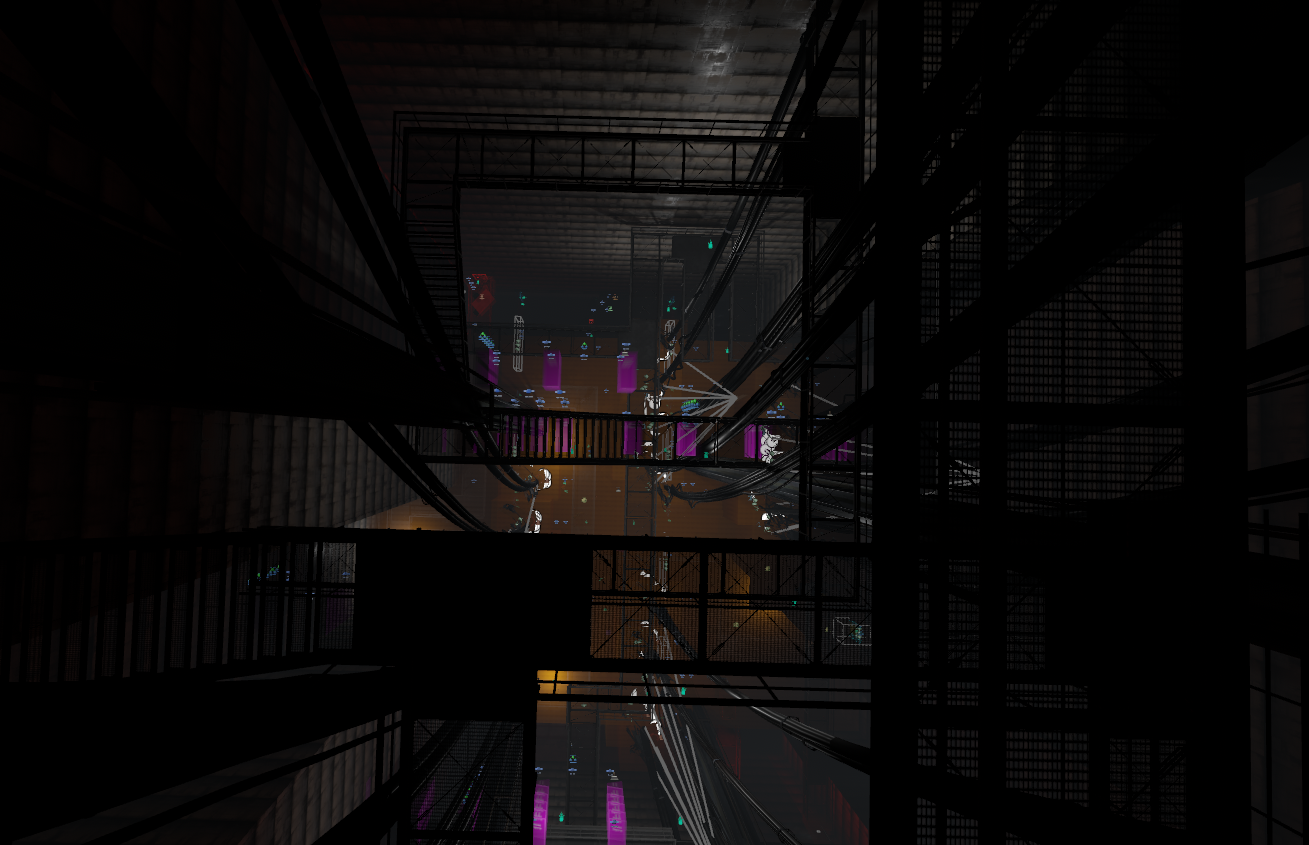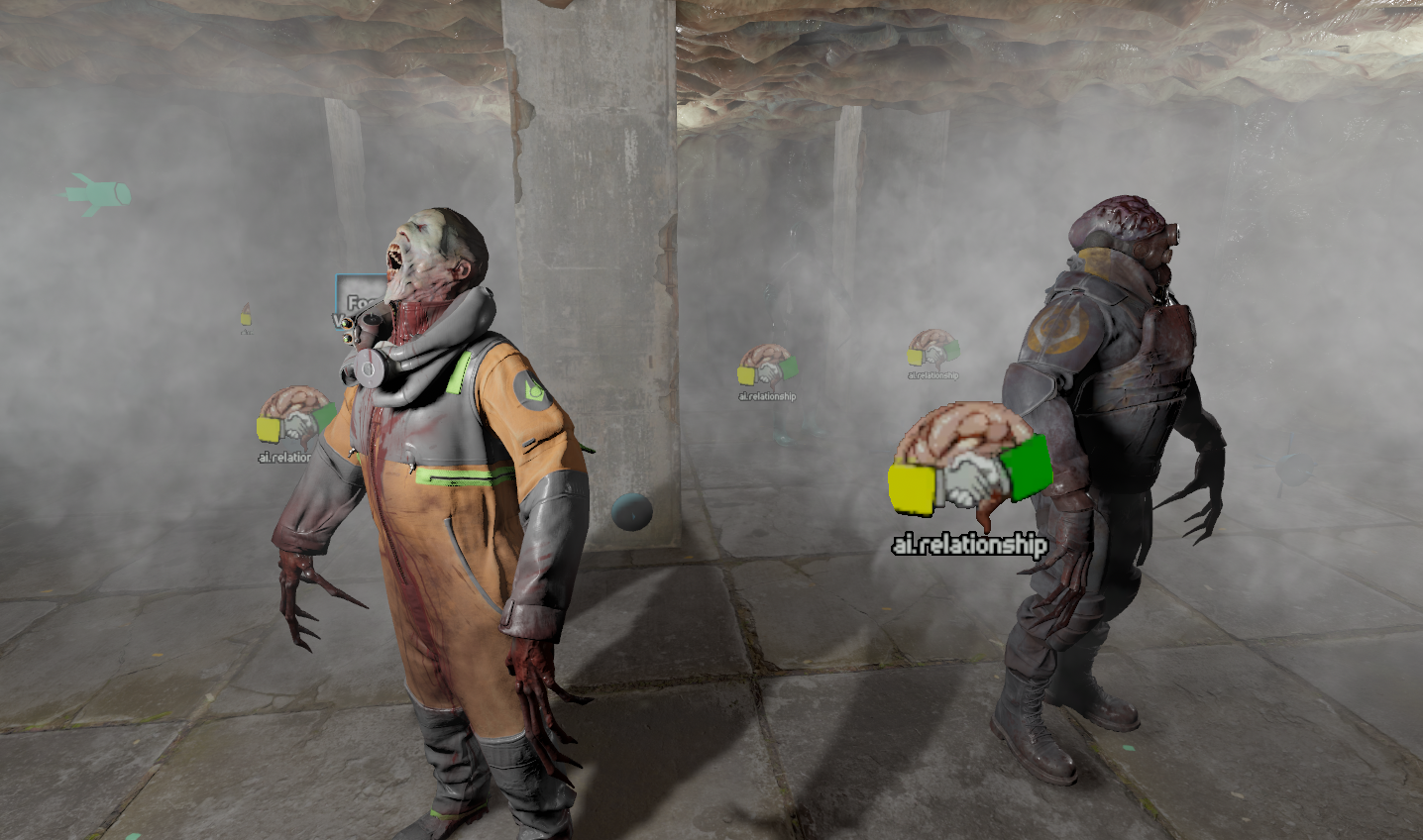PROTEUS
PROTEUS was my first project that focused on more than solely learning the basics of a game engine and with it I wanted to design and implement a small gameplay sequence that would resemble a portion of a quest in a single-player story driven first person shooter role playing game. In addition to further learning Unreal Engine 4, I wanted to explore interactive storytelling with a branching narrative. I made this over several months during the first term of the game design course I took with CG Spectrum in 2021.
PREMISE
You take on the role of a gun for hire. Along with several other mercenaries, you are recruited by an AI, known only as Mr. Pleasant, to infiltrate and retrieve data from Olympus - a city district with exclusive citizenship. Olympus is run by a powerful and experimental city AI known as PROTEUS. An infiltration and data recovery mission quickly turns into a desperate fight for survival.
Quest Flow
Real-time dialogue system
To help sell the experience of an interactive narrative, I followed some quick time event tutorials and repurposed them to create a fairly basic but functional dialogue system. This allowed me to quickly create and control every aspect of a given dialogue option. Even in this relatively small project this did become fairly complex as I added more branching options and included various audio, animation, visual effects, and UI cues. Since I also included some dialogue during combat sequences I decided to implement a simple animation to clear the screen when aiming down sights.
Retrospective
I was overambitious and over scoped just about every aspect of this project, but because of that I learned a great deal about the process of designing and implementing a playable experience in a fairly short amount of time.
DOOM 3: Ritual Of The Seraphim
VEGA would be a consistent presence throughout the experience responsible for relaying critical information to the player and helping where it could. Mostly VEGA would be flavor text to help the player understand events occurring in other parts of the map. The player would perform a series of tasks to ensure VEGA remains online, defeat minibosses, navigate a maze-like network of teleporters, escort a Cyberdemon under VEGA’s control through the UAC facilities and hell, sneak through patrolling guardian seekers, and finally survive a final large scale demonic invasion. Additional encounters I was unable to fully take advantage of due to technical constraints was generator upkeep with the battery system and transporting a plasma orb by using the grabber gun to transfer it between chambers in order to maintain its charge and power on a device in another corner of the level.
These objectives would occasionally be broken up by segments in which the player would need to quickly run through areas of the UAC where their oxygen was constantly depleting and they would need to find the exit teleporter as quickly as possible, sometimes refilling their oxygen by shooting specific triggers causing VEGA to temporarily transfer small supplies of oxygen to the player. I even experimented with traversing between areas via a tram network but everything else had already proved too ambitious to properly function and I did not get very far in building the tram system before scrapping it. As revolutionary as these tools were in 2004, this level was unable to come to fruition in the intended seamless, dynamic, and persistent experience I had envisioned. I was over scoped and underequipped. That said, I did learn to use the editor to make playable snippets of gameplay and could easily piece together a more traditional DOOM 3 level.
With this project I wanted to learn id Software’s map editor well enough to create my own custom DOOM 3 level. I ended using the built in map editor as well as Dark Radiant. With the level itself, I wanted to design and build a mechanically complex puzzle-like action experience akin to a Destiny 2 raid or the Black Ops Zombies Easter Eggs. This was intended to have varying degrees of success and failure, with failure acting as more of a setback than a complete game over and would be an ongoing gameplay loop of exploration, completing objectives, and surviving endless hordes of demons before unlocking a final encounter and finishing the level. Unfortunately, this dynamic ebb and flow of success and failure ended up being too out of scope for me to successfully implement within a single level of the id Tech 4 engine and I ended up separating objectives and encounters into multiple levels.
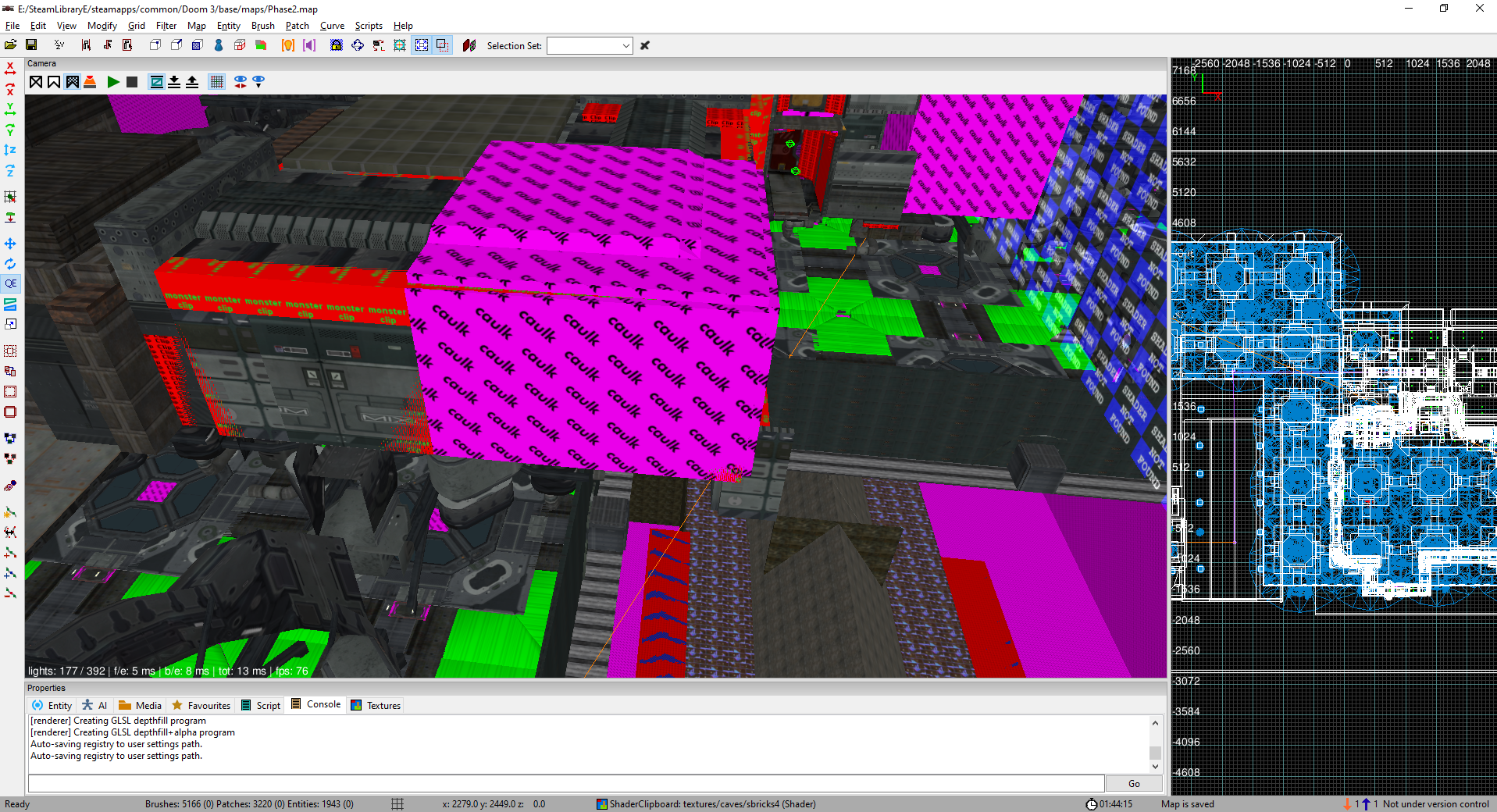



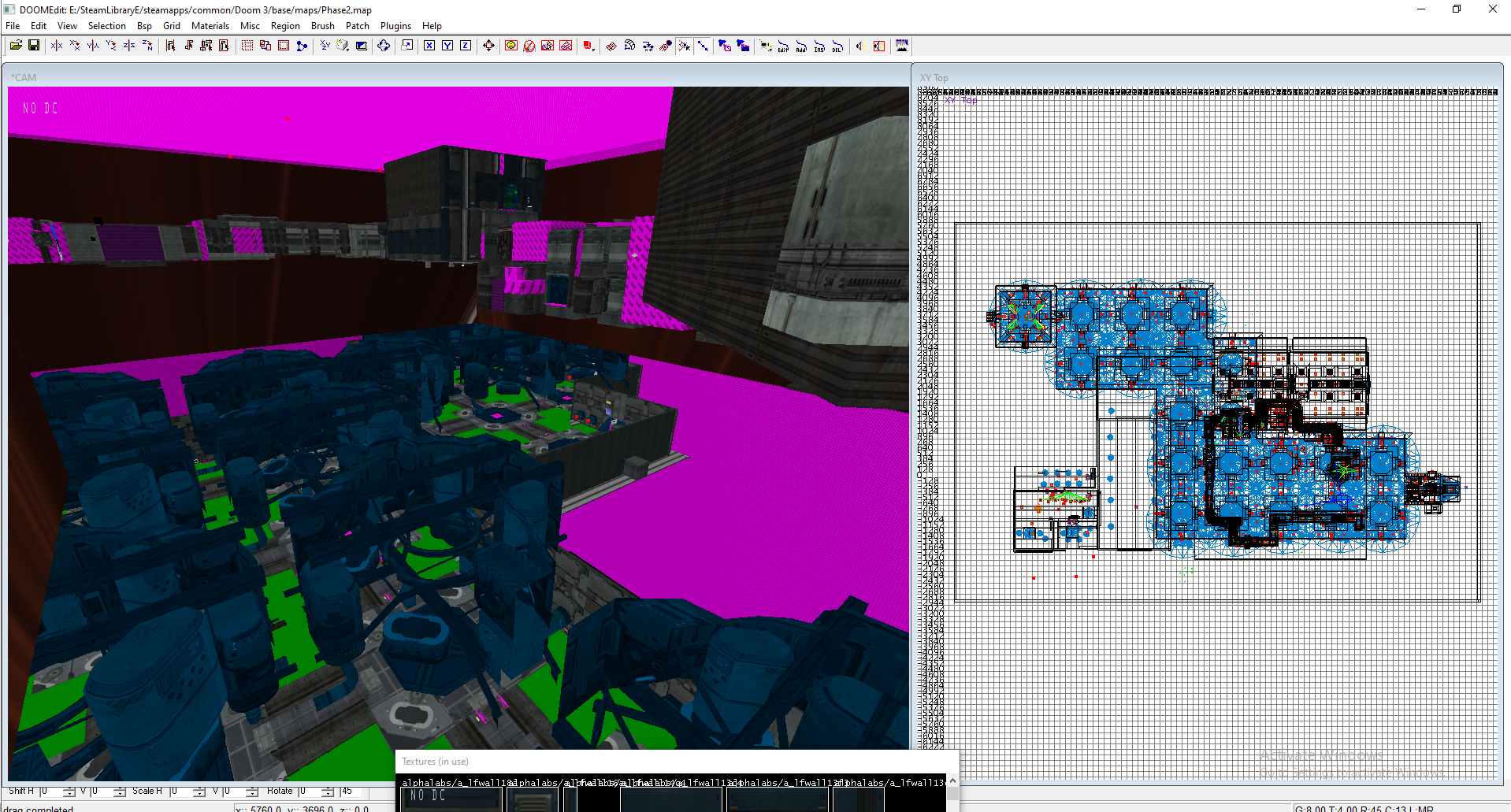
Half-Life: Alyx - “What’s In The Box?”
I created this custom Half-Life: Alyx level in two months towards the end of my time with CG Spectrum. My goals were to learn a new toolset - the valve hammer editor - design around and experiment with a new gameplay style - virtual reality - and create a fully playable, highly immersive, survival/horror experience.
Commentary 1/4
I wanted to play with large open spaces in combination with tight compact ones to create a sense of dread and unease - something which is extremely effective in VR. Even though the first room is vast and wide, the player’s movement is limited by pillars, construction equipment, and combine forcefields.
Verticality in VR environments is almost overwhelming and I played into this with layered level design and environmental details. As the player makes their way towards the first objective - a shut off switch for a combine forcefield - they see catwalks and cables stretching high into the ceiling. Energy pulses loudly and visibly from the ground floor up through the structure. They can hear and sometimes even see creatures above them, creatures they will surely encounter later on.
After making their way through the room, the player is jump scared by Jeff - a blind zombie capable of quickly killing the player should they get too close. Jeff may not be able to see, but his hearing is impeccable and he will quickly run over to any loud noises such as gunshots and explosions. The player is not equipped to kill Jeff and must instead carefully navigate the environment and manipulate his hearing to draw his attention and avoid him. In this section he is merely a nuisance, but relatively easy to steer clear of.
This introduction of Jeff mostly serves to remind players of his mechanics and make them aware that he will be a consistent presence throughout the level, further encouraging the player to be mindful of their actions. In addition to keeping the player on their toes through visual and audio elements, I leaned into Half-Life: Alyx’s scavenging gameplay loop. The player’s resources are few and far between. Every bullet counts and they’ll need to make decisions about which items to carry with them.
This next area was intended to slow down the pace a bit and give the player a chance to relax and let down their guard. To accomplish this I included a high density of some of the non-combat interactions that Valve created to provide resources and a small toner puzzle the player would need to solve before progressing. Keeping in the theme of survival/horror I chose to ambush the player with several headcrab zombies upon completing the puzzle. A little inelegant maybe, but effective nonetheless.
Commentary 2/4
The player then moves further upwards and onto the catwalks that were previously overhead. The player’s movement is extremely limited, but with careful aiming and enemy prioritization, staying alive is quite manageable. Another switch needs to be reached to deactivate the next forcefield blocking the path.
Jeff is once again present, though his movement and behavior is unfortunately not as consistent as I had hoped it would be for this section. The intention was for the player to be unable to avoid combat, thus drawing the attention of Jeff and leading to a chase akin to moments of the Resident Evil series with Mr. X for example or the Dead Space 2 Ubermorph, having an unstoppable enemy chasing down the player and putting pressure on them for a brief, but exciting encounter.
This did not work out as well as I had hoped. Jeff just isn’t built with a situation like this in mind, and in fact he would frequently get caught on the headcrab zombies in his way. Despite my best efforts, I wasn’t able to get Jeff’s behavior and pathing to align with my vision for this particular section of the level. Upon activating the lever, the player is free to advance up another floor where they are greeted with a view of the entire level thus far as well as given some more ammo before moving on into the next room.
Commentary 3/4
The player enters a maze-like combat arena with tight hallways and closed spaces. Enemies are scattered throughout the many rooms separated by combine fences. Jeff and combine soldiers possessed by the lightning dog are both able to pass through these fences ensuring that nowhere is truly safe for the player.
To progress, the player must find a keycard, hidden behind a hackable combine door, and kill the lightning dog and take its heart which will be used in the next section. Upon using the keycard, the player is given an opportunity to lock Jeff in a room while they more safely deal with any remaining enemies.
I included several hacking puzzles in this combat section as I wanted to experiment with situations that pressured the player to accomplish a more intricate objective in a dangerous environment. This had the added bonus that, although you’re able to seamlessly transition from hacking to fighting, when attempting to solve a puzzle the player must remain in close proximity to the puzzle leading to situations in which the player would need to decide to fight, escape, or try to finish off a hack.
Commentary 4/4
For the finale, the player must solve several puzzles while avoiding two blind zombies. In practice this isn’t too difficult to accomplish, but it provides tension and excitement to an otherwise simple encounter.
I have my own gripes with parts of the level being uninteresting or too drawn out, but in the end I accomplished what I set out to accomplish. I learned to use Valve’s hammer editor well enough to build this level from scratch (though I of course used some prefabs and scripted sequences), I learned to design for, and experimented with, gameplay in virtual reality, and the survival/horror elements were consistently functional and enjoyable - it’s kind of hard to mess that up when working within Valve’s framework.

